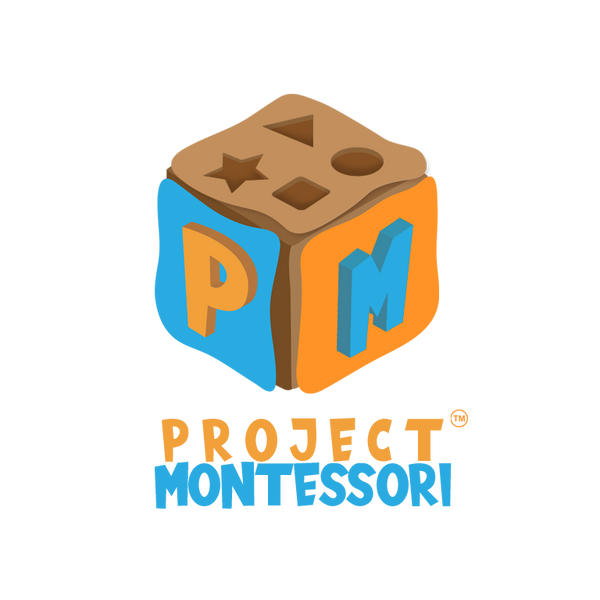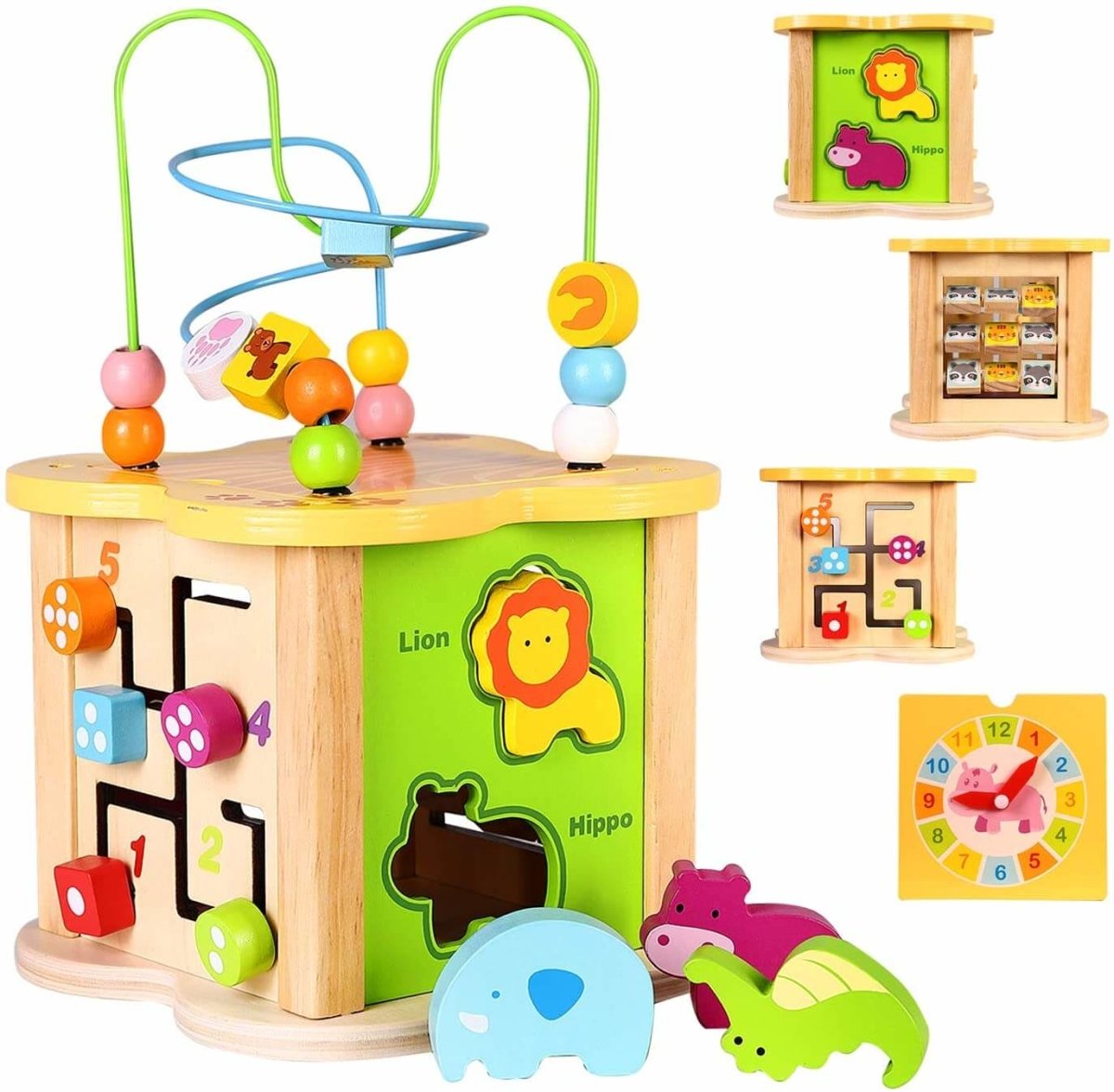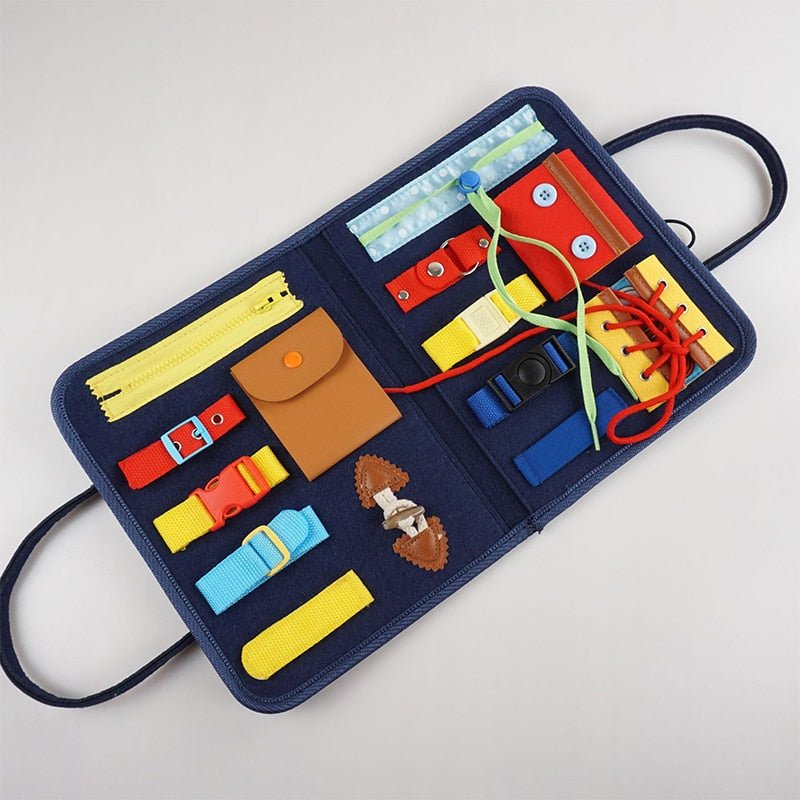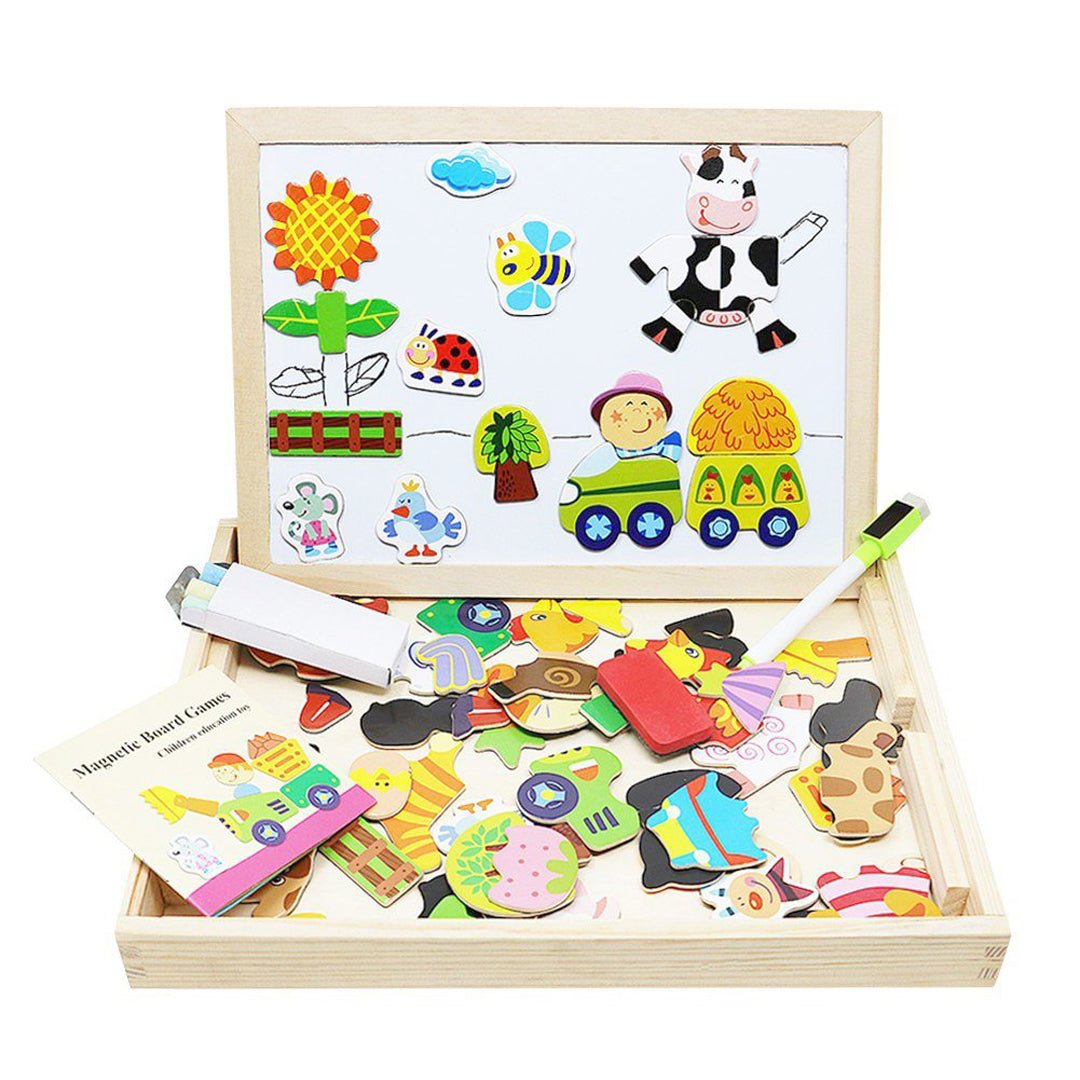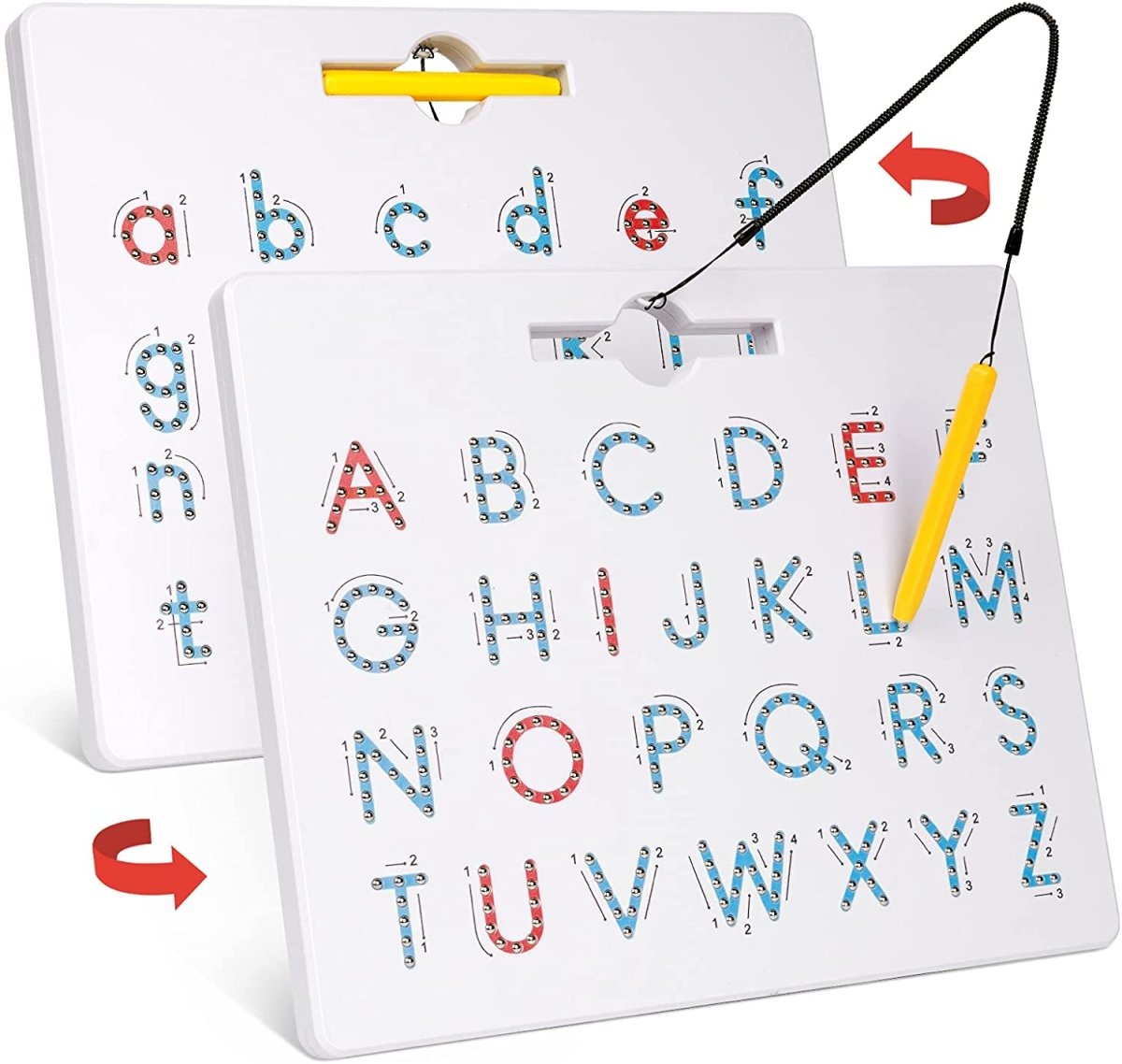
Montessori Toys - by Project Montessori
Your go-to toy store specializing in educational Montessori toys.
"Montessori children do better at reading and math but also outperform other children on a whole host of other indicators."

Montessori - What is it?
The Montessori method, created by Italian doctor Maria Montessori, encourages children to learn on their own through exploration rather than direct teaching. It emphasizes the importance of giving children access to the right resources and education from an early age. This approach is widely recognized for effectively supporting children's development.
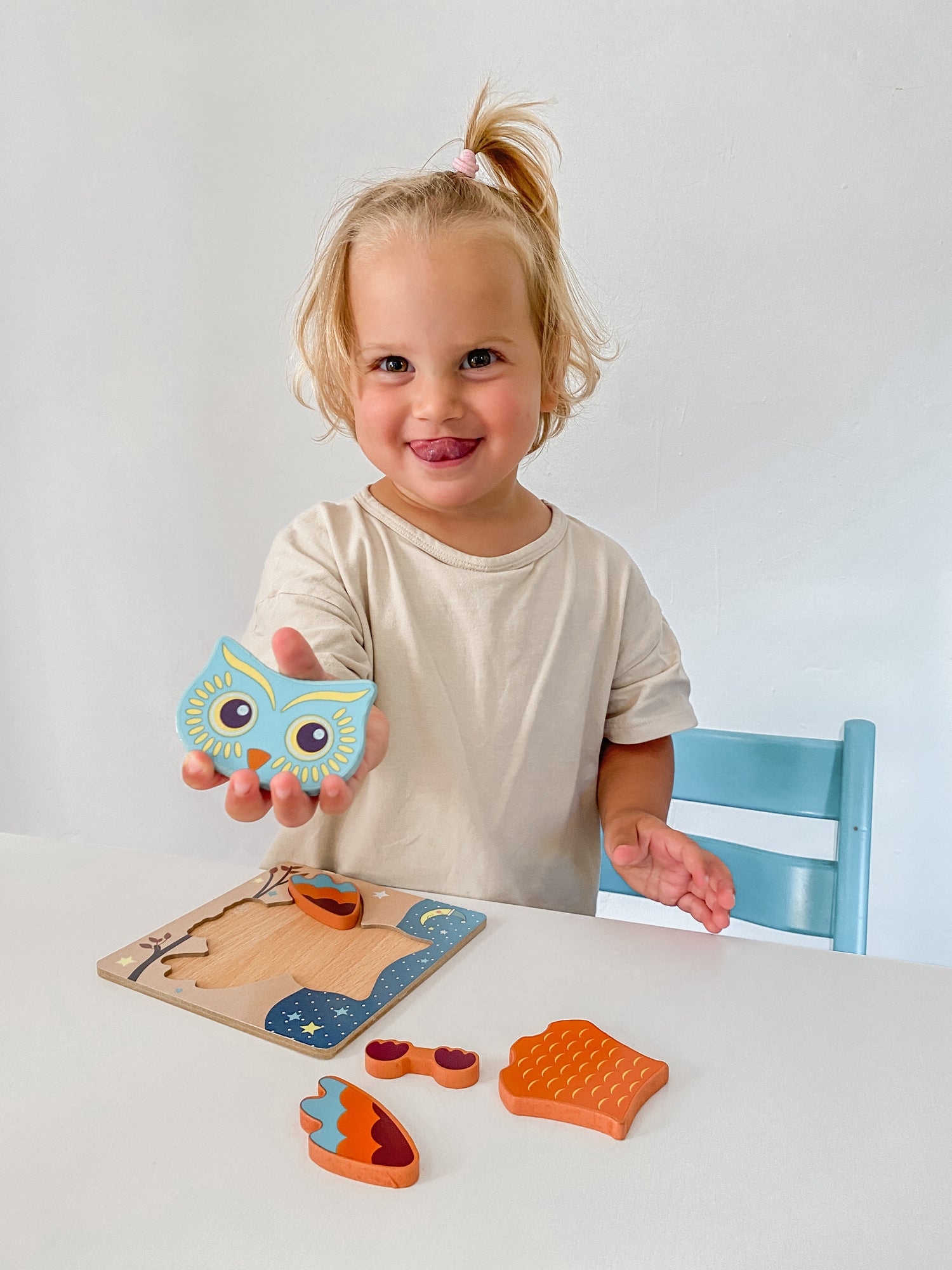
What are Montessori toys?
A Montessori toy is designed according to the principles of the Montessori educational method by Dr. Maria Montessori, support the development of a child’s skills through self-directed, hands-on learning and exploration.
FAQ
Why Are Montessori Toys Good?
Montessori toys are beneficial because they encourage active learning and problem-solving, requiring children to engage with them actively rather than passively. They help develop fine motor skills through activities like sorting and stacking, and foster concentration by capturing a child's interest at their developmental level. These toys promote independence as many are self-correcting, allowing children to learn at their own pace without constant adult intervention. Additionally, Montessori toys grow with the child, providing age-appropriate challenges and making them a lasting educational resource.
What is the purpose of play in Montessori?
The purpose of play in Montessori is to foster independence, creativity, and learning. Play is considered an essential part of a child's development, allowing them to explore their environment, develop motor skills, and engage in problem-solving. Montessori play encourages hands-on learning and helps children understand abstract concepts through concrete experiences.
How do Montessori toys work?
Montessori toys are designed to support self-directed learning and exploration. They are simple, purposeful, and often made from natural materials. These toys encourage children to manipulate and explore, promoting cognitive and physical development. They are usually open-ended, allowing for multiple ways of play, and self-correcting to help children learn through trial and error.
What is the difference between Montessori toys and regular toys?
Montessori toys are designed with educational principles in mind, emphasizing simplicity, purpose, and natural materials. They focus on promoting independence, concentration, and fine motor skills. Regular toys often prioritize entertainment and may include more colors, sounds, and plastic materials. Montessori toys encourage children to think and solve problems, while regular toys may not always have an educational focus.
Why are there no plastic toys in Montessori?
Plastic toys are generally avoided in Montessori because they often lack the sensory qualities of natural materials like wood. Montessori philosophy emphasizes the use of materials that provide a rich sensory experience and are durable. Wood, metal, and fabric are preferred because they offer different textures, weights, and temperatures, which help children refine their senses.
Why is everything in Montessori wood?
Wood is commonly used in Montessori because it is a natural, durable, and safe material. It provides a sensory experience that plastic cannot, such as texture, weight, and warmth. Wooden toys are also aesthetically pleasing and environmentally friendly. They are less likely to break and can be easily cleaned and maintained.
Why are Montessori toys not colorful?
Montessori toys are often designed in neutral or muted colors to avoid overstimulation and to help children focus on the task at hand. Bright colors can be distracting and may interfere with the child's ability to concentrate. By using softer colors, Montessori toys encourage deeper engagement and concentration.
Are Montessori toys self-correcting?
Yes, many Montessori toys are self-correcting. This means they are designed to allow children to see and correct their own mistakes without adult intervention. Self-correcting toys promote problem-solving skills, independence, and confidence as children learn through trial and error.
Are Montessori toys good for babies?
Yes, Montessori toys are excellent for babies. They are designed to support early development, including sensory exploration, fine motor skills, and cognitive growth. Montessori toys for babies often include rattles, sensory balls, and other items that are safe, simple, and engaging.
What are Montessori toys for babies?
Montessori toys for babies include rattles, sensory balls, and simple stacking toys. These toys are designed to be safe and to encourage exploration and sensory development. They help babies develop fine motor skills and understand cause and effect through hands-on play.
What are Montessori toys benefits?
Montessori toys offer numerous benefits, including promoting independence, enhancing concentration, and developing fine motor skills. They encourage problem-solving and critical thinking, support sensory development, and help children learn through exploration and discovery. Montessori toys are also durable, environmentally friendly, and aesthetically pleasing.
Are Montessori toys worth it?
Many parents and educators believe Montessori toys are worth the investment because they support holistic child development. They are designed to last, often becoming heirloom pieces that can be passed down through generations. Montessori toys encourage a love of learning and foster skills that are beneficial throughout a child's life.
Best way to start with Montessori?

Why Project Montessori?
Our number one goal is to help you accelerate the development of your little one, through playing with toys made out of natural materials and give them a head start before they start their journey in school.
Subscribe to our emails
Promotions, new products and sales. Directly to your inbox.
